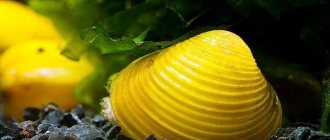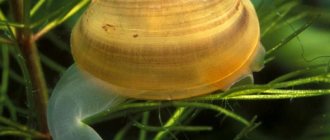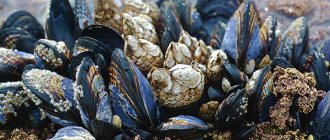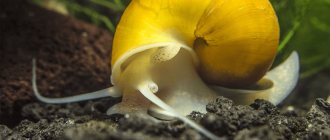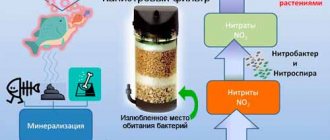Blanket 220x200 cm
1799 ₽ More details
Blanket 220x200 cm
999 ₽ More details
Wall shelves
The flora and fauna of Japan are distinguished by species diversity. The warm waters washing the islands create favorable conditions for the formation of amazing flora and fauna. Corbicula japonica is a bivalve mollusk. On the territory of Russia, it lives in the southern regions of the Far East and is small in size.
Corbicula japonica is a small bivalve mollusk
Description of the Sea Healer
Residents of the Land of the Rising Sun are well aware of this bivalve mollusk. In appearance it differs little from related species:
- Its shell is dark in color (black or dark brown).
- The sizes are quite modest. Adults can grow to a maximum of 20 mm.
- The outer part of the shell consists of regular ridges. It has a purple tint inside. She has no sinus.
The size of the carbicula reaches 62mm, the largest are 70mm.
It is noteworthy that only the Japanese corbicula has real blood. In the southern parts of Primorye, mollusks can reach a size of up to 62 mm. The largest species discovered today are about 70mm in length. The rapid growth of corbicula is explained by the fact that this region experiences different water temperatures for most of the year.
As soon as unfavorable living conditions arise, the mollusk burrows into the ground. It can go 45 cm deep.
The mollusk lives in sea waters. Its lifespan is no more than 10 years. It adapts well to changing environmental conditions. Corbicula lives at the bottom of reservoirs. The basis of her diet consists of:
- organic remains;
- tiny organisms that live on the seabed.
Sea healer - Corbicula japonica
The underwater fauna and flora of the Sea of Japan, in terms of the species diversity of its inhabitants, ranks first among the seas of our country! The movement of cold and warm water masses creates favorable conditions for the existence of both heat-loving and northern species of flora and fauna.
In our article we will consider one of the types of commercial bivalve mollusks in the south of the Far East, Japanese corbicula - Corbicula japonica Prime.
Bivalves of the genus Corbicula (corbicula) are a group of small brackish and freshwater mollusks widely distributed throughout the world. Due to their nutritional and medicinal value, these mollusks are important commercial objects.
The shell of Corbicula is trigonal, high, with a noticeably protruding crown. The outer surface consists of almost regular concentric ridges and is covered with thick dark brown or black periostracum. The inside color of the shell is purple, there is no sinus. The Japanese corbicula is the only shell that has “blood”.
The largest specimen of Corbicula reaches a length of about 60 mm. In China and Japan, corbicula reaches sexual maturity at 2-3 years of age with a shell length of 15-20 mm and can live up to 10 years of age, reaching a length of more than 40 mm. Whereas in the south of Primorye, Corbicula japonica reaches a size of 62 mm along the length of the shell. The different growth rates of the mollusk are explained by the difference in water temperatures during most of the year.
As the water temperature drops in the fall, the mollusks begin to burrow into the ground; the maximum burrowing depth is 45 cm.
As for the medicinal properties of corbicula, it is also called “sea healer” . The muscle tissue of these mollusks is significantly different from other seafood. Thus, compared to fish, shellfish meat contains 5-8 times more carbohydrates, which form compounds with proteins or lipids that can stimulate the human immune system and have an antilipemic effect. The tissues contain natural water-soluble (B1, B2, B6, PP, C, etc.) and fat-soluble (A, E, O, K, etc.) vitamins.
Systematic use of Corbicula is very useful for preventing myocardial infarction and eliminating blood clots. Shellfish contain substances (taurine, glycine) that regulate blood sugar and cholesterol metabolism, as well as antioxidant compounds necessary in the treatment of hypertension, arthritis, liver and for tissue regeneration after radiation damage.
Shellfish tissues are rich in potassium, selenium, iodine, and fluorine.
Biomedical and clinical trials have proven that extracts from fresh and frozen corbicula are useful as an effective preventive or auxiliary treatment for acute toxic hepatitis and chronic liver damage.
Extracts have hepatoprotective activity and affect the functional state of the liver. They normalize the activity of liver enzymes and prevent the development of pathological changes typical of acute hepatitis.
Constant intake of corbicula extract protects internal organs from toxic destruction and helps restore the liver in chronic alcoholism.
The Japanese believe that sujimi corbicula soup is an effective cure for jaundice. Regular consumption of corbicula broth stimulates the regeneration of liver cells, normalizes the activity of liver enzymes, prevents the development of pathological changes in the cellular structure of the liver, and is recommended for toxic and alcoholic hepatitis. Japanese carbicula is part of unique preparations developed by scientists from the Far East - Bilanorm, Sea Cocktail with corbicula.
You can read reviews of the “Sea” cocktail with corbicula in the Doctor Sea reviews section of our website.
Beneficial features
It is believed that eating this sea healer can normalize the condition of the blood vessels and muscles of the heart. This is due to the presence of important microelements in the mollusk. The composition of the product is unique. The key components of shellfish meat are:
- taurine;
- glycine.
These substances regulate blood sugar, dissolve cholesterol plaques deposited on the vascular wall, and prevent blood clots. It is known that this product contains compounds of fluorine, iodine, and selenium. Other beneficial properties:
- Protects the liver during alcoholism. Improves the condition of patients with hepatitis of various origins.
- Relieves intoxication and removes radionuclides.
Even if you cook a simple seafood soup, you can help your own liver recover, especially when hepatitis A is diagnosed.
The healing properties of carbicula shell are manifested in relation to hepatocytes. Based on live or frozen shellfish, an auxiliary remedy is prepared for chronic and toxic liver damage. Corbicula extract has a hepatoprotective effect.
Based on carbicula, an auxiliary remedy is being prepared for chronic and toxic liver damage.
Cooking tips
It is necessary to prepare a decoction of shellfish correctly in order to get the maximum benefit from its use. The prepared broth strengthens the immune system and restores strength after illness. You need to make a decoction from frozen or fresh shellfish. A good and effective remedy can be obtained by dipping 5 shells in 200 ml of cold water. It is in this ratio that experts recommend preparing the decoction.
The product is boiled for 2 minutes and left on the stove for about 10 minutes. It must be prepared overnight, and in the morning take one glass on an empty stomach. You can make a decoction several days in advance. Treatment should be a course. Corbicula decoction will help people with toxic liver damage and viral diseases.
Ready-made carbicula broth strengthens the immune system and restores strength after illness
Appearance of the bivalve mollusk "Corbicula java"
Photo: Javan corbicula bivalve mollusk, overall dimensions.
Corbicula java is a small snail, which makes it suitable for keeping in an aquarium. The size of the shell of an adult snail does not exceed 3 cm, young specimens are somewhat smaller - about 1 cm. The shell of the corbicula is bivalve, round in shape. Golden bivalves have a bright yellow color, so they look very elegant in aquariums.
Mollusks are active during daylight hours. Burying into the ground and exposing part of the sink with a siphon to the surface, they open the doors to filter water. At night, their valves are closed, the mollusks are at rest.
Hepatitis treatment
To restore inflamed liver cells, 10 to 15 shells should be placed in cold water. You will need 250 ml. After this, the product must be boiled over low heat for 2 minutes. The shells are left in the decoction until the morning, and after waking up, they drink the finished product on an empty stomach.
The course of treatment lasts 10 days, after which you need to take a week's break. Then the course is repeated again. For full treatment you will need at least 100 mollusks.
The Japanese have long noticed the beneficial properties of carbicula. This country even produces dietary supplements based on the product. They are available in the form of powders and capsules. People suffering from alcoholism are advised to take them to restore liver cells. Experts recommend combining this medicine with kelp powder.
Like any medicine , corbicula powder has contraindications . The main one is individual sensitivity to the product. If you have any doubts, you should consult a specialist before starting therapy.
Keeping Javan Corbicula in an aquarium
For corbicula, a tank with a volume of at least 10 liters is selected. These snails are very unpretentious. They are undemanding to the composition and quality of water. To maintain Javan corbicula, the temperature can be maintained within 15-30 degrees, and the water parameters can be as follows: pH 6.4-8.5, gH 10-24. Lighting also doesn't matter much to them. The only prerequisite for successful keeping and breeding of bivalve mollusks is a sufficient amount of oxygen in the water. Therefore, aeration in a reservoir with these mollusks is mandatory.
Photo: Javan Corbicula, in an aquarium.
In an aquarium with Javan corbicula, it is necessary to have medium-sized soil. These can be small pebbles or washed river sand. It is important that these mollusks are able to burrow into the ground, so large stones are not suitable for them. The soil layer should be at least 3 cm, but not too thick. These bivalves spend most of their time buried in the ground, and sometimes they move slowly, leaving behind a small groove in the sand. They feed on various microorganisms and algae, waste products of other inhabitants of the aquarium, and small particles of food. They eat pathogenic bacteria and protozoa that can harm the fish population of the aquarium. Therefore, diseases of aquarium fish are usually not observed in tanks with Javan corbicula.
Photo: Javan Corbicula, in an aquarium it can burrow into fairly coarse soil 2-4 millimeters deep.
Javan Corbicula are excellent orderlies for indoor ponds. With them, the water will always be crystal clear. They can be kept both in aquariums with adult fish and in nursery reservoirs, where water filtration is always difficult and the issue of hygiene is very important. After all, fry can get into a working filter, but bivalve mollusks are absolutely safe for fry.
The lifespan of Java Corbicula is about 4 years, although some individuals live up to 7 years.
With these mollusks you can keep most types of fish, shrimp and snails in the same aquarium. They usually do not harm the corbicula. But there are also exceptions. So, you should not place them next to large cichlids, ancistrus catfish, or bots. These fish can harm sedentary mollusks. Macrobranchium shrimp are also unacceptable in the vicinity of Javan corbicula, since, despite their powerful shell, they can damage or even eat the delicate mollusk. Among the aquarium species of snails there are also predators that feed on other mollusks. These are Helena snails. They eat other herbivorous snails, so they should not be kept in the same aquarium as corbicula.
